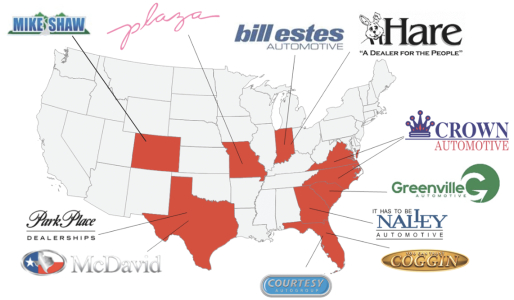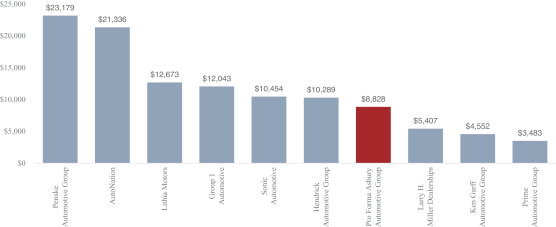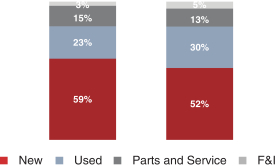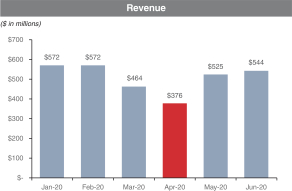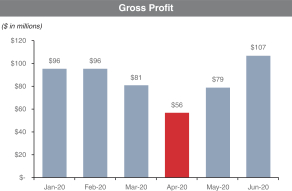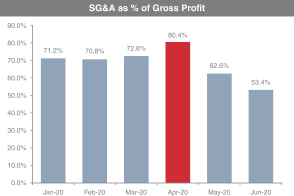Section 6.3 of each of the limited liability company agreements of the limited liability companies listed below provides that each shall indemnify its members and any duly authorized agents of the company for all costs, losses, liabilities and damages paid or accrued by the members or duly authorized agents in connection with the business of the company to the fullest extent provided or allowed by the laws of Delaware. The company may, under the same section, advance costs of defense of any proceeding to the members or duly authorized agents. Section 6.2 of each of the limited liability company agreements of the limited liability companies listed below provides that the liability of its members (or that members’ officers, managers, or members) for any liability of the company or any claim against the members for actions taken by them as members shall be eliminated or limited to the fullest extent permitted by the DLLCA and other applicable law. Each of the following Delaware limited liability company registrants are subject to the foregoing provisions: AF Motors, L.L.C., Arkansas Automotive Services, L.L.C., Asbury AR Niss L.L.C., Asbury Arlington MB, LLC, Asbury Atlanta AC L.L.C., Asbury Atlanta AU L.L.C., Asbury Atlanta BM L.L.C., Asbury Atlanta CHEV, LLC, Asbury Atlanta Chevrolet L.L.C., Asbury Atlanta Ford, LLC, Asbury Atlanta Hon L.L.C., Asbury Atlanta Hund L.L.C., Asbury Atlanta Inf L.L.C., Asbury Atlanta Infiniti L.L.C., Asbury Atlanta Jaguar L.L.C., Asbury Atlanta K L.L.C., Asbury Atlanta Lex L.L.C., Asbury Atlanta Nis II, LLC, Asbury Atlanta Nis L.L.C., Asbury Atlanta Toy 2 L.L.C., Asbury Atlanta Toy L.L.C., Asbury Atlanta VB L.L.C., Asbury Atlanta VL L.L.C., Asbury Austin JLR, LLC, Asbury Automotive Arkansas Dealership Holdings L.L.C., Asbury Automotive Arkansas L.L.C., Asbury Automotive Atlanta II L.L.C., Asbury Automotive Atlanta L.L.C., Asbury Automotive Central Florida, L.L.C., Asbury Automotive Deland, L.L.C., Asbury Automotive Fresno L.L.C., Asbury Automotive Group L.L.C., Asbury Automotive Jacksonville GP L.L.C., Asbury Automotive Management L.L.C., Asbury Automotive Mississippi L.L.C., Asbury Automotive North Carolina Dealership Holdings L.L.C., Asbury Automotive North Carolina L.L.C., Asbury Automotive North Carolina Management L.L.C., Asbury Automotive North Carolina Real Estate Holdings L.L.C., Asbury Automotive Oregon L.L.C., Asbury Automotive Southern California L.L.C., Asbury Automotive St. Louis II L.L.C., Asbury Automotive St. Louis, L.L.C., Asbury Automotive Tampa GP L.L.C., Asbury Automotive Texas L.L.C., Asbury Automotive Texas Real Estate Holdings L.L.C., Asbury Automotive West, LLC, Asbury CH Motors L.L.C., Asbury CO CDJR, LLC, Asbury CO SUB, LLC, Asbury Dallas BEN, LLC, Asbury Dallas KAR, LLC, Asbury Dallas MAS, LLC, Asbury Dallas MB, LLC, Asbury Dallas MCL, LLC, Asbury Dallas POR, LLC, Asbury Dallas RR, LLC, Asbury Dallas VOL, LLC, Asbury Deland Hund, LLC, Asbury Deland Imports 2, L.L.C., Asbury DFW JLR, LLC, Asbury Fort Worth MB, LLC, Asbury Fresno Imports L.L.C., Asbury Ft. Worth Ford, LLC, Asbury Georgia TOY, LLC, Asbury Grapevine LEX, LLC, Asbury IN CBG, LLC, Asbury IN CDJ, LLC, Asbury IN CHEV, LLC, Asbury IN FORD, LLC, Asbury IN HON, LLC, Asbury IN TOY, LLC, Asbury Indy Chev, LLC, Asbury Jax AC, LLC, Asbury Jax Ford, LLC, Asbury Jax Hon L.L.C., Asbury Jax K L.L.C., Asbury Jax Management L.L.C., Asbury Jax VW L.L.C., Asbury MS CHEV L.L.C., Asbury MS Gray-Daniels L.L.C., Asbury No Cal Niss L.L.C., Asbury Plano LEX, LLC, Asbury Sacramento Imports L.L.C., Asbury SC JPV L.L.C., Asbury SC LEX L.L.C., Asbury SC Toy L.L.C., Asbury So Cal DC L.L.C., Asbury So Cal Hon L.L.C., Asbury So Cal Niss L.L.C., Asbury South Carolina Real Estate Holdings L.L.C., Asbury St. Louis Cadillac L.L.C., Asbury St. Louis FSKR, L.L.C., Asbury St. Louis Lex L.L.C., Asbury St. Louis LR L.L.C., Asbury St. Louis M L.L.C., Asbury Tampa Management L.L.C., Asbury Texas D FSKR, L.L.C., Asbury Texas H FSKR, L.L.C., Asbury TX Auction, LLC, Asbury-Deland Imports, L.L.C., Atlanta Real Estate Holdings L.L.C., BFP Motors L.L.C., Camco Finance II L.L.C., CFP Motors L.L.C., CH Motors L.L.C., CK Chevrolet L.L.C., CK Motors LLC, CN Motors L.L.C., Coggin Cars L.L.C., Coggin Chevrolet L.L.C., CP-GMC Motors L.L.C., Crown CHH L.L.C., Crown CHO L.L.C., Crown CHV L.L.C., Crown FDO L.L.C., Crown FFO Holdings L.L.C., Crown FFO L.L.C., Crown GAC L.L.C., Crown GBM L.L.C., Crown GCA L.L.C., Crown GDO L.L.C., Crown GHO L.L.C., Crown GNI L.L.C., Crown GPG L.L.C., Crown GVO L.L.C., Crown Motorcar Company L.L.C., Crown PBM L.L.C., Crown RIA L.L.C., Crown RIB L.L.C., Crown SJC L.L.C., Crown SNI L.L.C., CSA Imports L.L.C., Escude-NN L.L.C., Escude-NS L.L.C., Escude-T L.L.C., Florida Automotive Services L.L.C., HFP Motors L.L.C., JC Dealer Systems, LLC, KP Motors L.L.C., McDavid Austin-Acra L.L.C., McDavid Frisco-Hon L.L.C., McDavid Grande L.L.C., McDavid Houston-Hon, L.L.C., McDavid Houston-Niss, L.L.C., McDavid Irving-Hon, L.L.C., McDavid Outfitters, L.L.C., McDavid Plano-Acra, L.L.C., Mid-Atlantic Automotive Services, L.L.C., Mississippi Automotive Services, L.L.C., Missouri Automotive Services, L.L.C., NP FLM L.L.C., NP MZD L.L.C., NP VKW L.L.C., Premier NSN L.L.C., Premier Pon L.L.C., Prestige Bay L.L.C., Prestige Toy L.L.C., Q Automotive Brandon FL,
II-2
